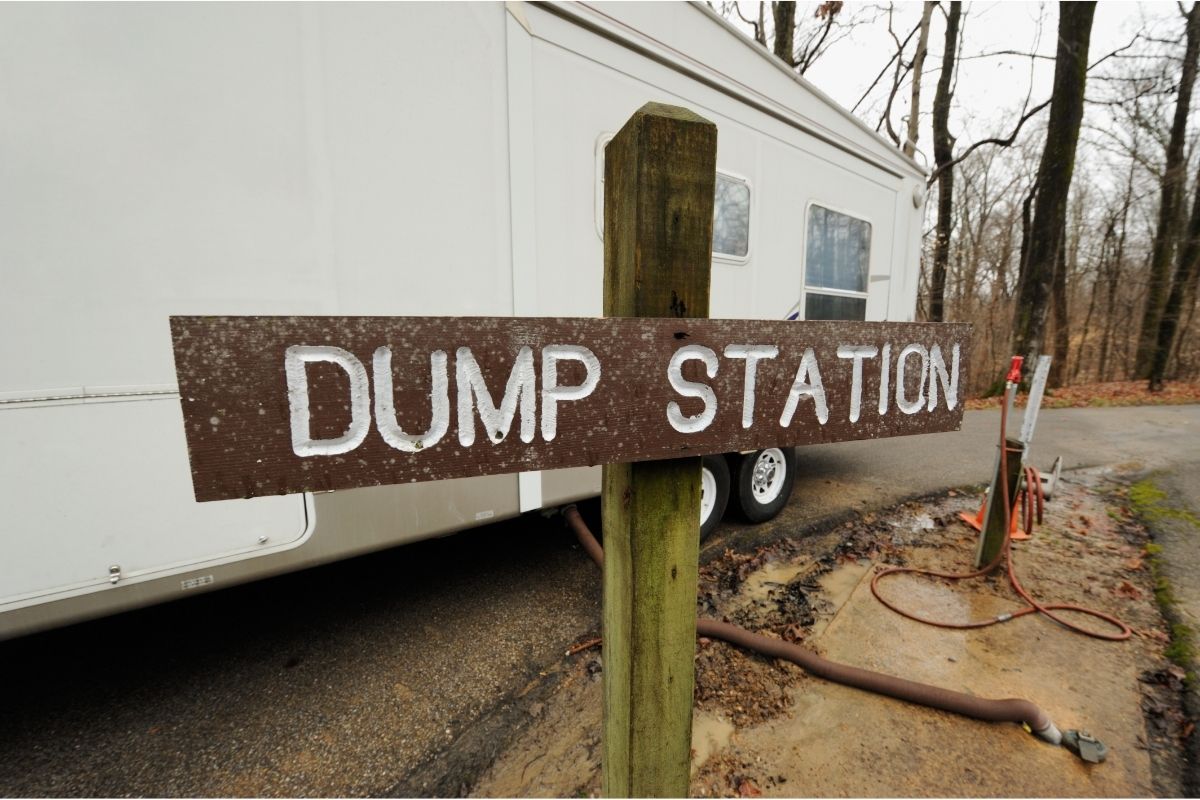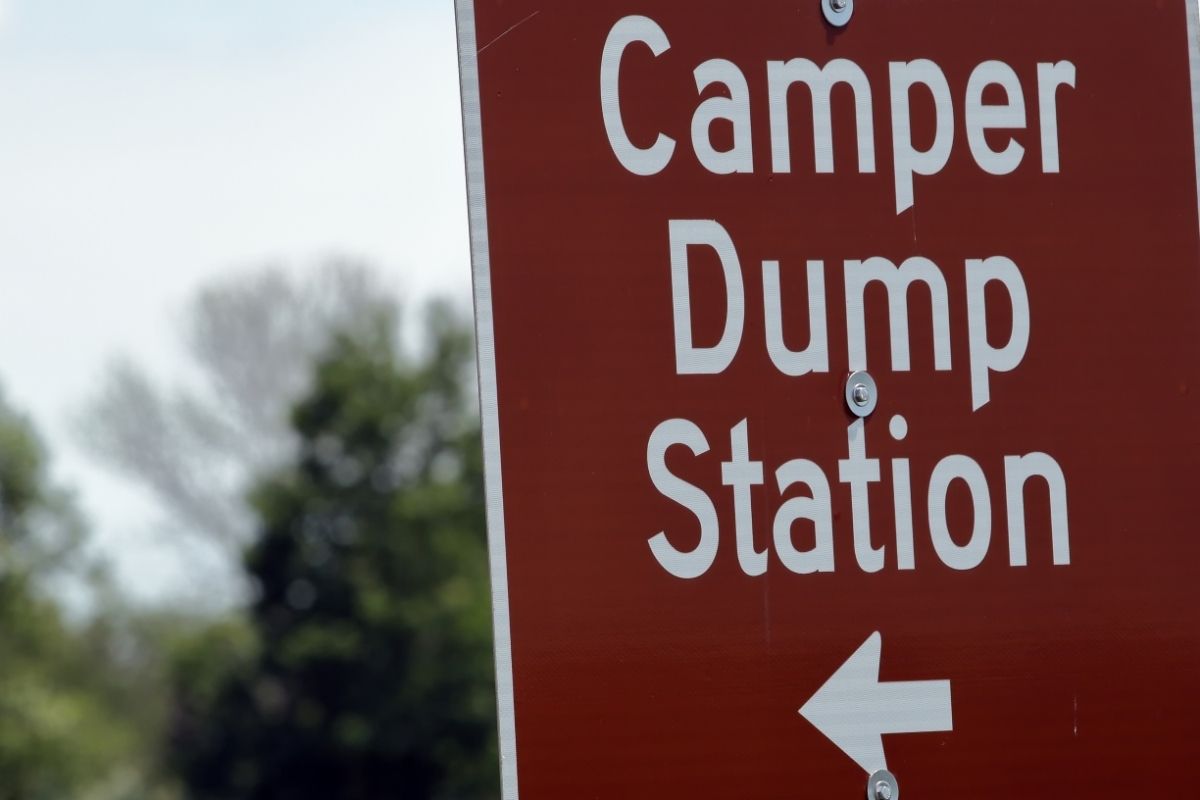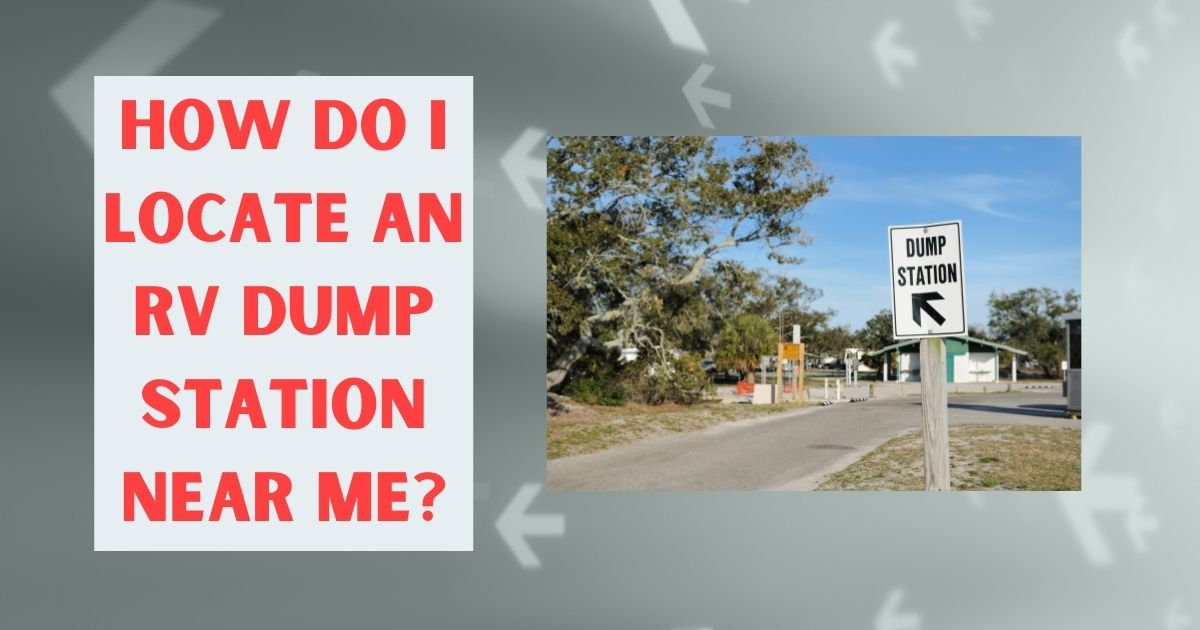An RV dump station is a safe and secure place to transport wastewater from your motorhome, campervan, or caravan. However, it can be challenging when it’s time to find an RV dump station near me.
Keep reading to find out how to locate an RV dump station!

Using an RV Dump Site Map
When you’re taking a trip in your RV, making sure that you have an available camper dump station near you is very important. The last thing you want to happen is to be stranded and without access to a public RV dump site. When using one of these RV dump sites, you’re going to need to know how to do it properly.
When using an RV dump site map, you should be aware of the following:
Know What Type of Dump Station You’re Using
There are several different types, with the most common being a drive-through.
In the case of a drive-through, you need to pull up close enough to the opening before pushing the dump button. It is not just the dumping station you’re using in this situation. It is also a sewer line, so you need to ensure there isn’t any water or other fluid in it before pushing the dump button.
Know-How to Use the Dump Station Properly
The last thing you want to do is push the dump button and try to open the sewer valves while driving. While it might seem efficient, you can easily damage your RV or the sewer line if you don’t know what you’re doing.
When you’re using a drive-through RV dump site map, these are the steps you should follow:
Enter the drive-through area of the dump station so that all your hoses are inside. Then, make sure you park close enough to the opening of the dump station to be able to push the dump button without moving.
Many RVers ask this question: What if I use a sewage dump station near me? If you’re using a sewer line, this automatically attaches your hoses and connects them to the dump station. However, if you’re using a bay or pit, you must link your hoses manually. Push the dump button to begin the process.
This opens the valves in your sewer lines, which allows all the water in them to drain out. First, wait for the dump process to finish. Then, close the valves on your hoses by pushing the dump button again or removing them from the line if you’re using a bay or pit.
While most camping organizations don’t explicitly provide an RV dump site map, individuals create several online resources. These include the official dump site map for KOA campsites, generally considered a trusted source.
Make sure you use the correct type of dumpsite before throwing it out. This protects your RV and makes sure that you’re not contaminating the area around you. Also, always ensure you know how to use the site before using it. It will also ensure that you get the most out of your trip.
Finding an RV Dump Station in Three Easy Steps
Dump stations for RVs are easier to locate now than ever before. What was it like before the Internet’s invention? All we need to do is:
Log on to a Website
These two websites make it simple to locate a nearby dump station: sanidumps.com and RVdumps.com.
Before the internet was invented, many people didn’t know where to find dump stations, and those who did find them rarely traveled across state lines. Now, RV dump stations are more accessible to locate than ever before.
All it takes is using an internet website, such as sanidumps.com or rvdumps.com, and you’ll find all the dump stations in your area! Simply type in your address or city and hit enter.
Sanidumps is a FREE app that provides other free camping services like WiFi finders and propane prices. In addition, it has several map formats (offline), including an easy-to-read Motorhome Dump Site map.
It has a database of 7,500 RV dump stations and pull-thrus with FREE satellite imagery so you can see where they are located. This is the most comprehensive map and the least likely outdated since it relies on user input rather than official sources.
Use an App
There are several applications accessible that make locating a dump station a breeze. Campendium and iOverlander are two excellent apps to try out first. Read our article and plan your next RV trip with the RV Life App.
Choose Campgrounds With a Dump Station
If you’re new to the RV lifestyle, perhaps this is where you should start. First, organize an overnight stay in a campground with a dump station. Then, when the time comes to unload your waste, don’t overfill it. Dumping extra water into the drain could cause a clog, which would be disastrous.
Once you’ve mastered these steps, it’s time to move on to using a public dump station. However, you shouldn’t do this until you’ve gained some hands-on experience.

What Is an RV Dump Station?
An RV dump station is a specialized sewer system designated for RVs. This means that all the pipes are big enough to hold an RV’s waste. It also ensures that the pipes are high enough to prevent trouble when you’re emptying your tanks.
Our Top Tips for Using an RV Dump Station Revealed
Waste is inevitable when you are out on the road with an RV. But where does all of this waste go? Well, if your RV is equipped with a dumping station, this waste is dumped onto an RV dump site. However, not all RV dump sites are created equal.
Using an RV dump station can be challenging if you are not adequately prepared or if your dumping site is not what it should be. For this reason, we recommend you read our top tips on using an RV dump station. You might as well start here as none of these steps require preparation; they can all be done at the site itself:
- Before you release your gray tank, release your black tank. This will aid in the washing away of some of that more delicate waste after you’re done.
- Many dump stations also provide drinking water, so choose the correct connection if you want to refill your water tanks. There are typically two hoses available: one with hot, cold, and gray water connections for filling up your sinks and showers; the other has just greywater. Make sure you use the suitable hose for the right job.
- Fill up your gray water tank first. While flushing fresh water can help you empty your black tank, it does not flush as efficiently as gray water. Using fresh water is certainly an option if your dump station is too far from a city to give you access to gray water.
- Also, keep in mind to clean up the area and any spills that may occur throughout your dumping process using the water hose provided at most dump stations.
- Make certain the RV Dump Station Hole is airtight. Hoses should have a small, black ‘Donut” on the end of them. Slip this over the hose and use your thumb to push it down onto the dump hole, sinking it into place. Ensure that you secure the hose both at the end and on your actual dump hole.
- Ensure that you keep an eye out for any seepage. If this does start to happen, immediately move the hose off of the dump hole and let your tanks drain back into the RV.
- Also, if you are using a public dumpsite, never leave the dump hose unattended. Others may need to use it after you, so keep your watchful eye on it and your hose.
- Check and double-check that the black and gray valves are correct if you have different tanks or valves for freshwater. If you have a black and gray tank, ensure that the valves are right before allowing any sewage to go into the dump hole. If you neglect this, the hose may fill up with fresh water instead.
- Also, remember that many dump stations are not handicap accessible, so you might find it difficult if you have a wheelchair or cannot walk long distances.
- If there is no handicap access, only polluting the area is proving more complicated than you thought, or there are no restroom facilities at your RV dump station, do not continue to use the station. Always respect signs and be courteous to other people who need to use your dumpsite.

Conclusion
Dump stations are a great convenience when you’re traveling with an RV. They make it easy to dispose of your waste, but they can be challenging to find if you don’t know where to look. However, there are several ways to locate them in advance, and we’ll cover the main ones below for your reference.
In general, dump station locations will either be at campgrounds or public parks with camping sites available, so check out those options first before looking elsewhere. If there is no dump station near you, please call the location before arriving to make sure they are open. Happy camping!
